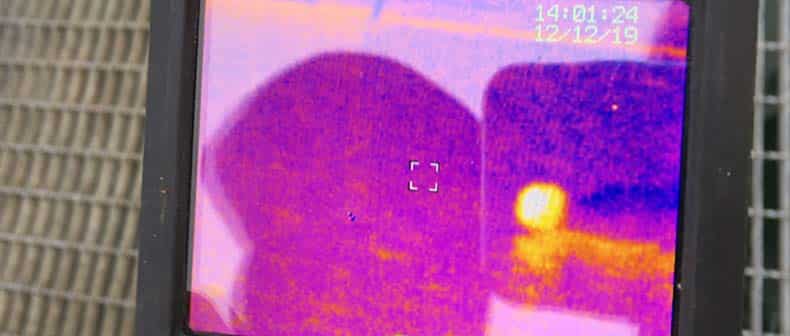Originally developed during the Korean War for use by the military, thermal imaging cameras have now found their place in new sectors, everything from emergency response and medical diagnostics to architecture analysis and environmental control.
You’ll now be able to find thermal imaging cameras widely used by coastguards and other water rescue teams to quickly spot casualties bobbing around above the water’s surface to make for quick and effective rescues at sea or in other bodies of water.
Here’s four reasons to include thermal imaging into your water rescue training and toolbox…
1. No light, no problem.
Water rescues can happen at any time of day or night. From searching for missing persons along a shoreline to locating someone lost in wetland areas with high rushes and reeds, you cannot always rely on having a good light source when out on the water – so having a tool that will help you accurately identify your casualty, even when experiencing low light or even complete darkness is always a massive bonus. Unlike night vision (NVG), thermal imaging cameras do not require any light at all to transmit an image back. Just the slightest difference in temperate between objects will show up on the camera to give the rescuers a clear picture to spot their casualty.
2. Add real-time interpretations for Radar Returns
When using radar during a search you can often find that the return is not always 100% reliable as radar system can sometimes fail to detect floating debris, structures, and even other vessels. Thermal Imaging cameras can be used in conjunction with the radar return to capture the scene in real-time, allowing rescuers to create a more accurate picture of what is ahead and identify their casualties in the water.
3. Multiple colour modes for better inspection
Most thermal imaging cameras have multiple colourisation modes which can allow rescuers to analyse and inspect the scene with greater precision. This leads to a greater understanding of what they could be looking at as the different colour modes may help them to identify potentially unseen elements either with the naked eye or in the other colour modes.
4. Saving time saves lives
When someone enters the water, it is vital that they are located swiftly to improve the likelihood of their survival. Using thermal imaging within search and rescue saves vital seconds, enabling rescuers to quickly spot casualties in the water in difficult conditions or within large search areas (when using a helicopter or drone for example).
Since recognising the importance of thermal imaging within the search and rescue/water rescue community we set about creating a product that would help enhance teams’ training abilities, while also baring in mind the tight budgets and resources many volunteer crews have to manage when training to save lives.
Instead of creating a whole new manikin range with thermal imaging capabilities, we recognised that a high number of water rescue crews out in the field were already using our Man Overboard manikin within their training programs, and created a thermal imaging hood which could be placed over the head of the crew’s existing Ruth Lee manikin to give the manikin a realistic heat signature (from up to 2000ft!) when viewed through a thermal imaging camera.
A small addition to existing training equipment to help level up rescue results!
If you’d like to learn more about our thermal imaging hood, head here or feel free to get in touch with us to ask any questions or request a free demo.
A full thermal imaging suit is also available for use in search and rescue training on land.
